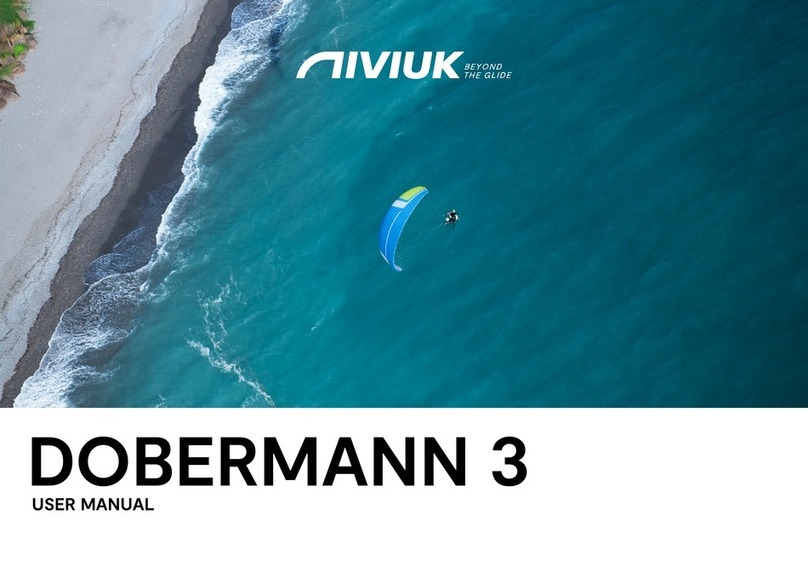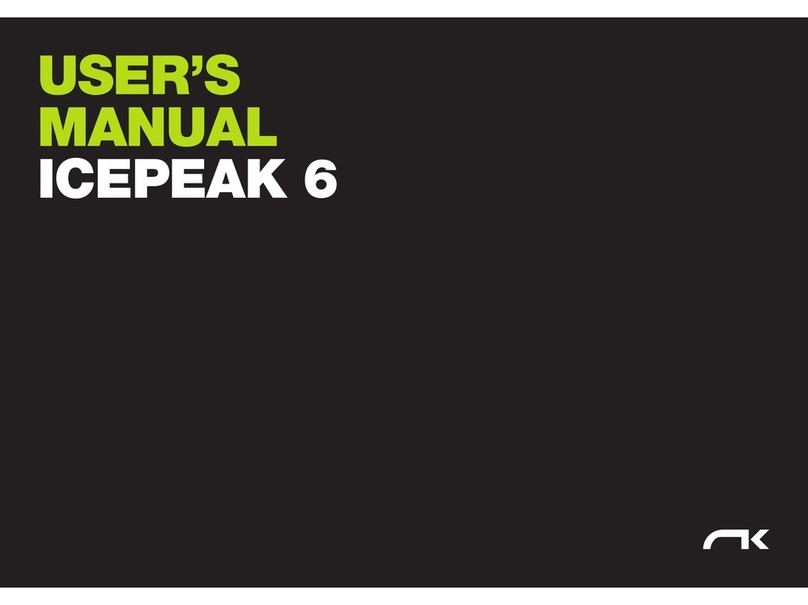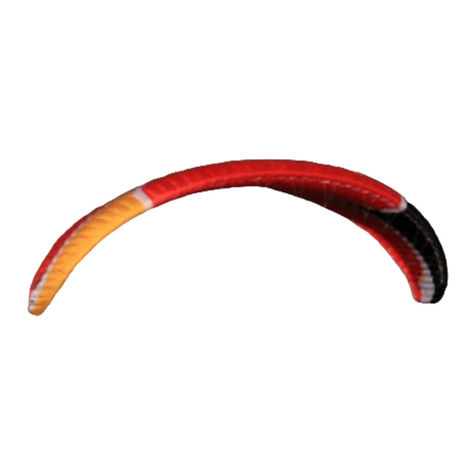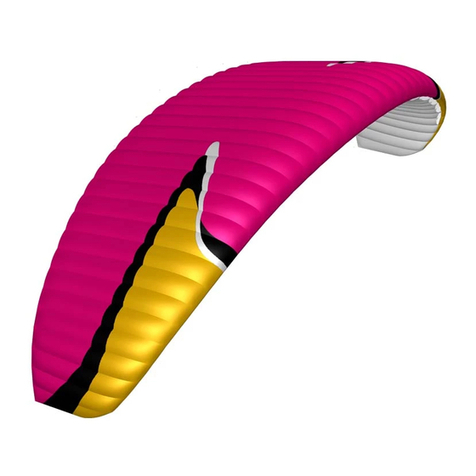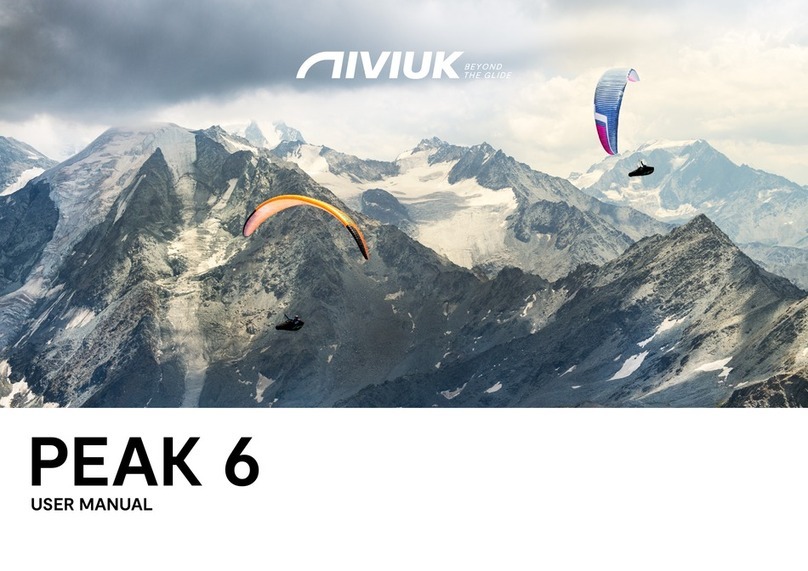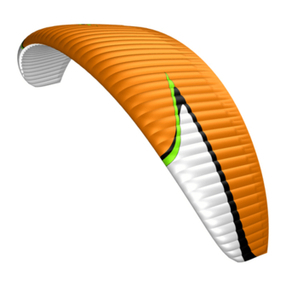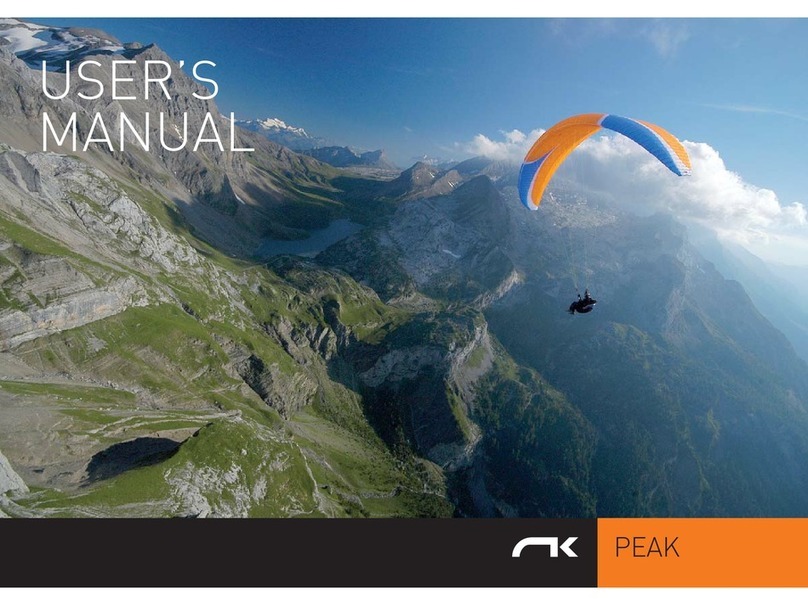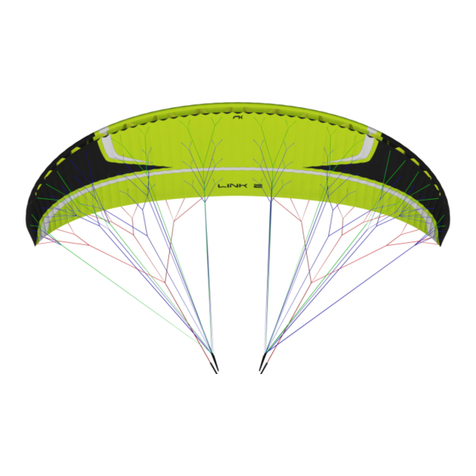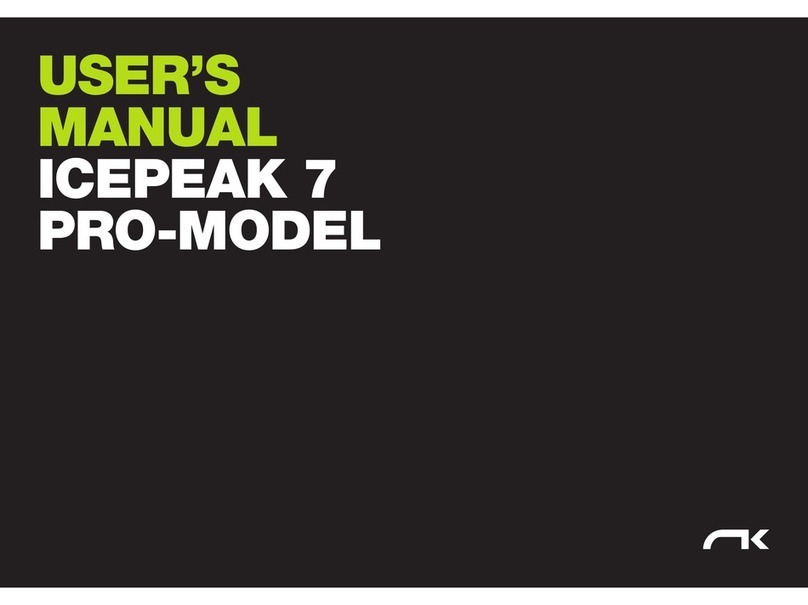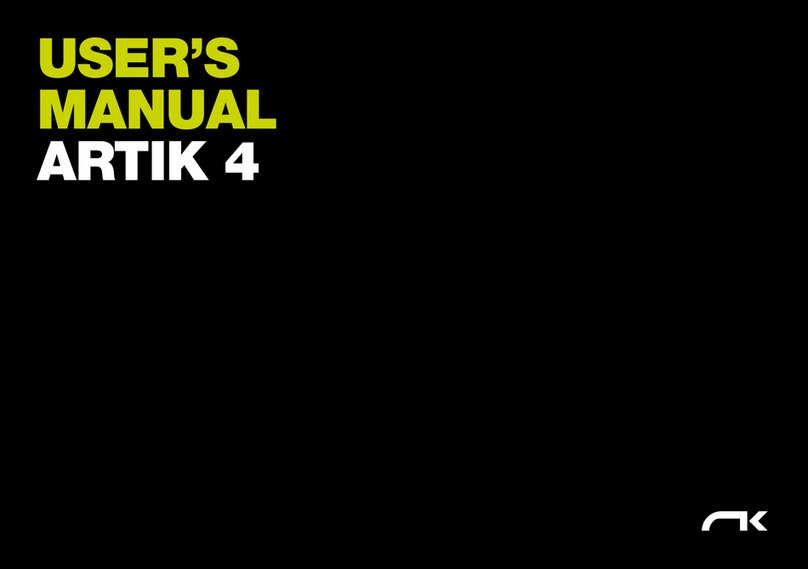
5
comfort by decreasing the transmission of movements from the wing to
the passenger
1.4 CONSTRUCTION, MATERIALS
The TAKOO 5 has all the technological innovations used on other Niviuk
gliders and is built with the most careful selection of current materials. It
has all the current technology and accessories available to improve pilot
comfort whilst increasing safety and performance.
In the design of all Niviuk products the team aims to ensure development
and continuous improvement. The technologies developed in recent
years have allowed us to develop greater, better wings.
It is in this context that we would like to introduce the technologies
included in this new model.
RAM - The Ram Air Intake system is characterised by the arrangement
of the air inlets, to ensure optimal maintenance of internal pressure
across the the whole range of angles of attack. The result? Having
greater internal pressure means better tolerance of turbulence, greater
consistency of the prole shape across the speed range; excellent
handling at low speed is achieved by allowing the pilot to extend the
braking limit, there is a lower risk of collapse and consequently, greater
control and safety.
TNT (Titanium Technology) - Nitinol is a combination of 50% nickel and
50% titanium. This technology provides three outstanding benets that
increase the performance of the wing, compared to plastic rods. *With
the incorporation of the Nitinol rods, the weight of the wing is reduced by
13% compared to nylon.
*Nitinol has closely related properties. It has shape memory and
enormous elasticity. This means that the rods maintain their optimum
shape even after ultra-compact or bad folding, so that the wing does not
suffer from deformation unless the radius at the point of bending is less
than 1 cm.
*The leading edge shape is much more rigid and uniform. This means a
much more consistent and progressive ination; which translates into an
easier take-off. The prole is taut at all times, without creases or wrinkles,
and fully optimised for all ight phases.
In addition, the rods have a plastic protector at their ends to prevent any
damage to the fabric of the wing. Nitinol is now featured in all our wings.
SLE (Structured Leading Edge) - The SLE is a rigid structure located at
the leading edge of the wing that eliminates the need for old-fashioned
mylar reinforcements in this area, thus reducing the weight and
increasing the durability of the wing. The leading edge will also have
better turbulence absorbing qualities. In addition, the SLE provides
greater solidity and strength in the leading edge to maintain its shape at
all speeds and angles of attack, thus increasing performance.
3DP (3D Pattern Cut Optimization) - This technology seeks to
implement the best orientation of the cloth on each panel according to
its location on the leading edge. If the cloth pattern is correctly aligned
with the load axes, the cloth suffers less deformation ight after ight, so
the leading edge keeps its shape better and maintains its durability over
time. The design of our paraglider and paramotor wings has evolved a lot
over the years, signicantly affecting the leading edge.
The application of this innovation, in conjunction with the 3DL, is key to
converting the perfect shape from 2D to 3D.
3DL (3D Leading Edge) - 3DL technology is an adjustment of the fabric
at the leading edge of the wing to control the ballooning and the creases
that are generated by the curvature in this area. The leading edge is
then divided into sub-panels which are sewn into each of the cells at
the front of the wing. As a result, the leading edge of the wing is more
evenly tensioned, which benets the wing in performance and durability.
As an example, because of its similarity, imagine a rugby ball. In order to
produce its characteristic oval shape without wrinkles, its cover is made


